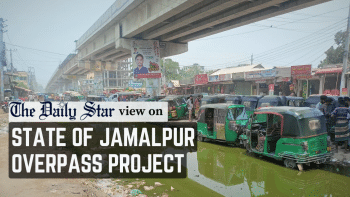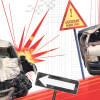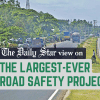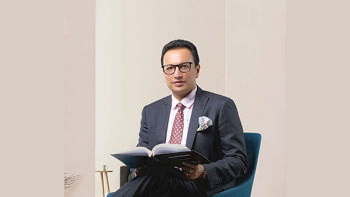Why road safety designs need people’s voices

Road safety is not merely a matter of engineering; it is a matter of understanding human behaviour, context, and the daily experiences of those who use our streets.
In Bangladesh, pedestrians remain the most vulnerable road users. Every day, children walk to school along busy streets, people run errands, and workers cross highways to reach factories or offices. Their journeys, often short in distance, can nonetheless carry enormous risk. Zebra crossings fade under dust and wear, signals malfunction or go unnoticed, and footpaths are blocked by vendors, parked vehicles, or are poorly maintained. Even when crossings exist, their placement and design often fail to match natural pedestrian routes, forcing people to take unnecessary risks. Despite awareness campaigns and ongoing infrastructure improvements, pedestrian deaths continue to rise—a grim reminder that road safety requires more than well-intentioned plans; it requires solutions designed around the realities of human behaviour and the experiences of users.
A recent Bangladesh Road Safety Project (BRSP) study surveying 108 pedestrians and 41 drivers at high-risk crossings revealed notable differences in safety perceptions. Pedestrians, particularly students, were divided between fencing and green separation along footpaths, balancing safety and comfort, while commuters and workers prioritised fencing for protection. They overwhelmingly favoured raised crossings, better lighting, and clear markings over police or signal enforcement, showing trust in design-based interventions. Drivers, however, preferred fencing and active controls, such as signals or police presence, with large vehicle operators emphasising enforcement and smaller vehicle drivers placing less weight on comfort or greenery. In short, pedestrians favour design-focused safety measures, whereas drivers lean towards control-based interventions.
This divide highlights a deeper disconnect between road design and use, as pedestrians often ignore designated crossings that are inconvenient or unsafe, while drivers hesitate to yield when crossings appear disorganised, pedestrians behave unpredictably, or signals fail. In many cases, infrastructure itself creates risk. Decades of top-down road safety planning in Bangladesh have focused on technical standards, expecting users to adapt. Closing this gap requires a people-centred approach—co-designing—involving pedestrians, drivers, engineers, and community representatives to identify problems and develop solutions that are technically sound, contextually relevant, and practically usable.
This participatory philosophy aligns closely with the globally recognised Safe System approach, which acknowledges that humans make mistakes and that the transport system must be designed to prevent these mistakes from resulting in serious injuries or fatalities. It focuses not only on infrastructure but also on behaviour, institutional coordination, and shared responsibility. In Bangladesh, where multiple agencies—including the Roads and Highways Department (RHD), Bangladesh Road Transport Authority (BRTA), police, and Directorate General of Health Services (DGHS)—share overlapping roles, collaboration is essential. International experience, including guidance from the World Bank, shows that sustainable safety outcomes emerge when strong policy leadership from the top is paired with meaningful participation from communities at the ground level.
Behavioural insights further strengthen this perspective by helping to explain not just what people do, but why they do it. Findings from my research reveal that drivers are more likely to yield to children, women, or elderly pedestrians out of empathy, and more likely to slow down for groups crossing together rather than individuals. Pedestrians, on the other hand, often prioritise convenience over safety when crossings are poorly located or when footbridges require significant effort to use. Such behaviour is shaped more by necessity and habit than by negligence. Understanding these behavioural motivations is essential for designing interventions that reshape habits and perceptions, rather than merely changing road geometry. Blaming road users will not solve the problem; instead, recognising gaps in service delivery, system design, and infrastructure placement is fundamental to creating a forgiving and user-friendly road environment.
Building on these insights, I propose a practical framework known as UPLIFT (Upgrade, Provide, Leverage, Improve, Focus, Target) to guide co-created and behaviourally informed road safety interventions—(i) upgrade the visibility, accessibility, and usability of existing crossings for all users; (ii) provide physical features like raised crossings, barriers, and lighting are to guide safe behaviour; (iii) leverage communities, schools, and workplaces to reinforce safe practices through social influence; (iv) improve awareness campaigns with visible environmental changes so that education and infrastructure mutually reinforce safety; (v) focus on shared priorities between drivers and pedestrians to reduce conflict and build trust; (vi) target both emotional and conscious motivations using visual cues, empathetic messaging, and consistent design to encourage safer crossing behaviour.
Bangladesh's journey towards safer roads demands a cultural shift. Safety will be ensured when road users see themselves as partners in a shared system by combining behavioural science, participatory design, and institutional accountability.
Dr Mohammad Shaheen Sarker is additional project director of Bangladesh Road Safety Project at the Roads and Highways Department. He can be reached at [email protected].
Views expressed in this article are the author's own.
Follow The Daily Star Opinion on Facebook for the latest opinions, commentaries and analyses by experts and professionals. To contribute your article or letter to The Daily Star Opinion, see our guidelines for submission.

 For all latest news, follow The Daily Star's Google News channel.
For all latest news, follow The Daily Star's Google News channel. 










Comments